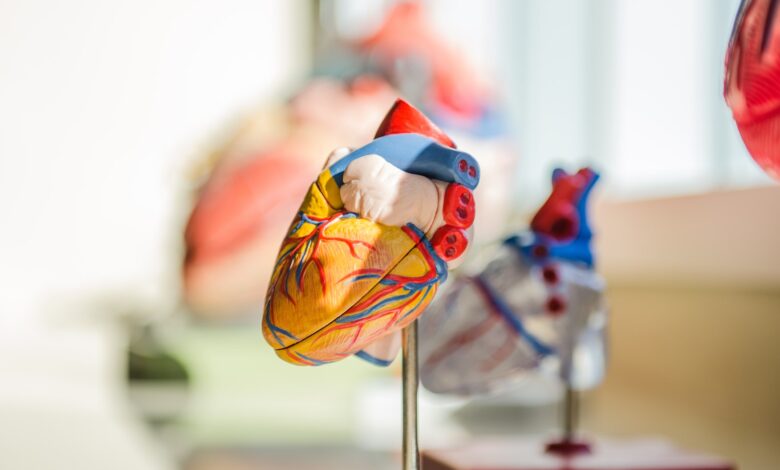5 Most Common Cardiovascular Issues Today

Heart conditions seem to be some of the most common diseases among people today. There are cardiovascular illnesses related to the heart and blood. These illnesses are also known to be life-threatening cases that should be treated accordingly. No matter what age, everyone is susceptible to heart diseases for different reasons. This is also why visiting the best cardiologists should be something you do on a regular basis.
Heart and cardiovascular diseases do not always manifest in your physical health. In many cases, some are left undiagnosed and thus untreated for a long time. This will make your cases worse since time is important when it comes to serious health issues. You might feel that you are healthy or fit but this does not necessarily reflect your conditions in your body.
If regular visits to your cardiologist are not something you can do regularly, having knowledge in the area of cardiology is a plus. This will help you have an idea of what you, your family, or friends could have. At the same time, this will also serve as a guide on the things that should be observed properly.
Here are some of the most common cardiovascular problems:
Heart Attack
A heart attack, or myocardial infarction, usually tops the list of cardiovascular diseases in the United States — statistically and anecdotally. Someone in the United States has a heart attack about every 40 seconds. While TV shows and movies commonly portray heart attacks, the outward reactions don’t shed light on what’s happening inside the body.
A heart attack occurs when the heart muscle is cut off from the oxygen it needs to operate. This happens because the blood flow delivering that oxygen has been significantly reduced or stopped entirely. This is due to atherosclerosis, or the slow buildup of plaque, which includes fat, cholesterol, and other substances, in the coronary arteries. Blood clots can form around the plaque, which can slow or block the blood flow and cause a heart attack.
Coronary Heart Disease
Coronary heart disease, also called coronary artery disease, is a chronic (long-lasting) disease and affects the blood vessels that supply blood to your heart. Coronary heart disease is the most common cause of death in Australia and although it cannot be cured, there are treatments that can reduce your risk of future heart problems and improve your symptoms.
Coronary heart disease occurs when the arteries that supply your heart with blood become blocked. If your heart doesn’t get enough blood, you may experience chest pain, feel out of breath, or have a heart attack.
Blockages form because cholesterol builds up in the walls of blood vessels, forming plaque. Over time, the plaque grows in size, making the blood vessel increasingly narrow and allowing less blood to pass through. This is called atherosclerosis.
Aneurysm
An aneurysm is a bulge in an artery or vein usually caused by a weakening of the blood vessel wall. Aneurysms can be harmless. As long as they don’t rupture (burst), they probably won’t cause any problems. However, sometimes aneurysms can burst because the vessel wall is weakened. This can be very dangerous, causing bleeding and even death.
Aneurysms can occur anywhere. But there are two main types that are very serious — aortic aneurysms and brain aneurysms (also called cerebral aneurysms). Aortic aneurysms occur in the aorta, which is the main artery that carries blood from the heart to the rest of the body. Brain aneurysms affect blood vessels in the brain.
Aneurysms can occur at any age but are more common in adults.
Heart Failure
Heart failure is a serious condition, but it does not actually mean that your heart has failed. It means that your heart is not pumping blood around your body very efficiently.
The left side of your heart pumps blood to the body including the brain and kidneys. The right heart pumps blood to the lungs. Heart failure can affect the left or the right side of your heart, or both.
Most commonly, a problem with function on the left side of the heart produces back pressure leading to additional right heart failure. Fatigue and shortness of breath can also result from untreated heart failure. These can greatly interfere with everyday activities like walking or climbing stairs.
Stroke
Stroke is considered a heart disease because the condition centers around blood flow. However, a stroke is due to problems with blood flow to the brain rather than the heart. Ischemic strokes account for 87 percent of all strokes and occur because of blockage in a blood vessel that delivers blood and oxygen to the brain. Without blood and oxygen, parts of the brain can suffer damage or die off if not treated quickly. Hemorrhagic strokes may have various causes besides blockages, such as a vascular malformation or abnormal growth of brain blood vessels.
Key Takeaway
Health is something that should be maintained well and doing it properly will save your life in the long run. With this, learning about the common cardiovascular issues today can be your first step in combating such diseases.
From heart attack to stroke, all issues related to the cardiovascular system are serious. The more you learn about these diseases, the more you can understand what can happen to you and how you treat it. These are also things worth teaching others to save a life.




